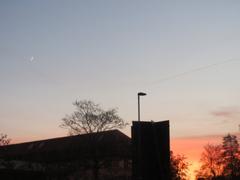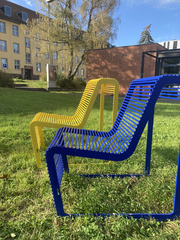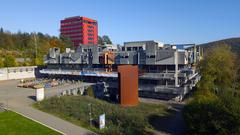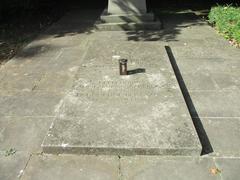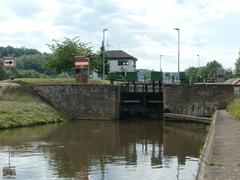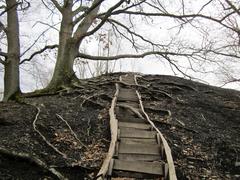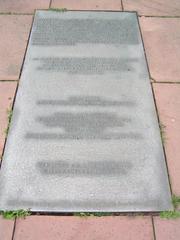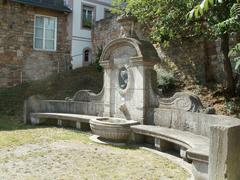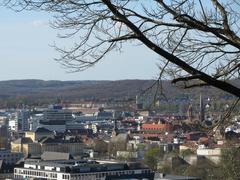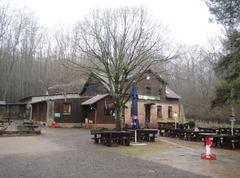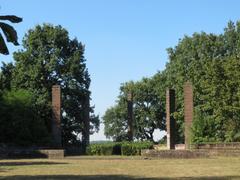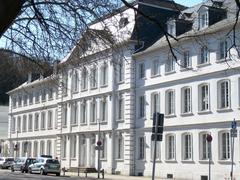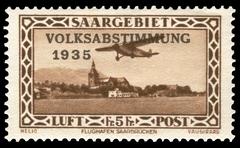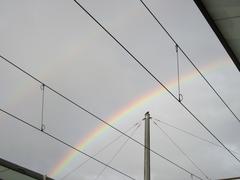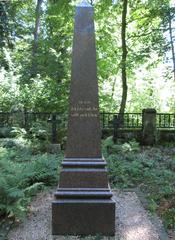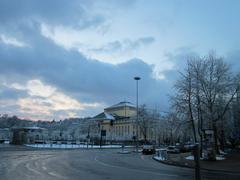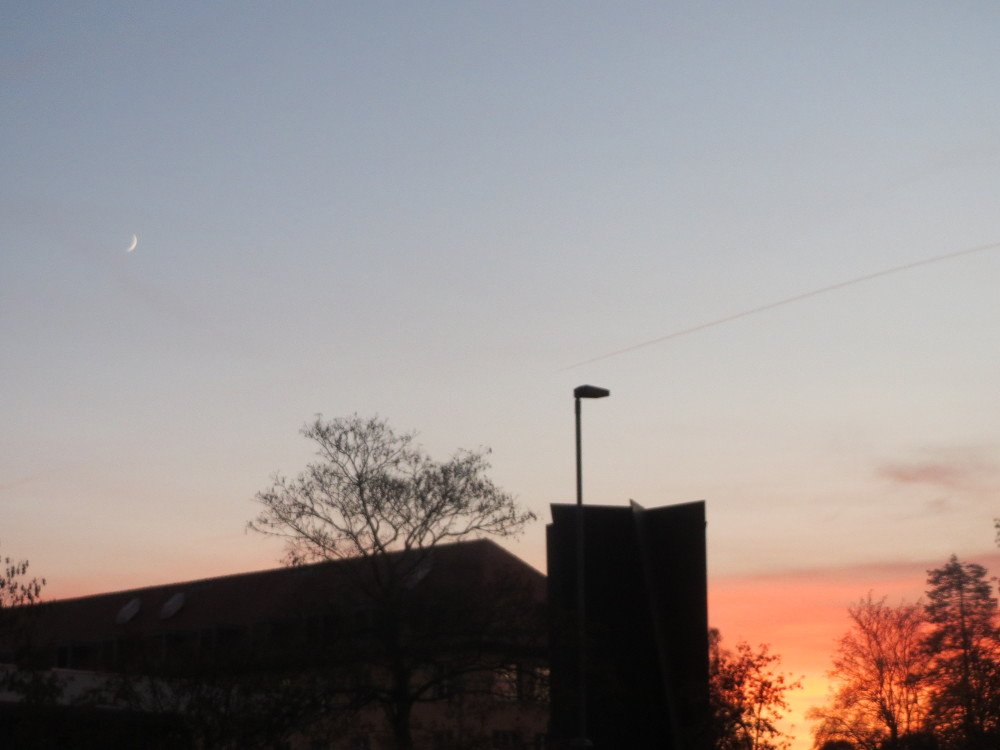
Saarland University Visiting Guide: Saarbrücken, Germany – Visiting Hours, Tickets, and Practical Tips
Date: 14/06/2025
Introduction: History, Culture, and Visitor Information
Located in the vibrant city of Saarbrücken, Saarland University stands as a testament to post-war reconciliation and academic innovation. Established in November 1948 under French administration, the university is renowned for its unique Franco-German heritage, which is reflected in its multilingual programs and international partnerships (HowToAbroad). The campus itself is a harmonious blend of modernist architecture and scenic forests, echoing its historical roots and progressive academic spirit.
Saarbrücken, the capital of the Saarland region, is a cultural crossroads influenced by its proximity to France and Luxembourg. The city is home to significant landmarks like the bustling St. Johanner Market Square, the elegant Baroque Saarbrücken Castle, and the UNESCO-listed Völklingen Ironworks. Visitors can enjoy a dynamic cultural scene, diverse cuisine, and a welcoming atmosphere (Saarbrücken City Guide).
This guide details everything you need to plan your visit, including campus visiting hours, ticketing, guided tours, accessibility, travel tips, and highlights of nearby attractions. Whether you are a prospective student, a history enthusiast, or a traveler, Saarland University and the city of Saarbrücken offer a memorable experience celebrating cultural diversity and innovation (Saarland Informatics Campus).
Table of Contents
- Introduction: Why Visit Saarland University and Saarbrücken?
- History and Foundation
- Visiting Saarland University: Hours, Tickets, and Tours
- Getting There and Navigating the Campus
- Accessibility and Visitor Services
- Nearby Historical and Cultural Attractions
- Saarbrücken Castle: Visiting Guide
- St. Johanner Markt: Visitor Information
- Accommodation Options
- Practical Tips and FAQ
- Plan Your Visit and Stay Connected
- References
Why Visit Saarland University and Saarbrücken?
Saarland University is more than an academic hub—it’s a cultural landmark rooted in post-war European unity and forward-thinking research. Its serene, forested campus, innovative programs, and multicultural environment make it a prime destination for learning and exploration. The surrounding city, Saarbrücken, complements the university experience with historic sites, lively markets, and a vibrant blend of French and German influences.
History and Foundation
Post-War Origins and European Vision
Founded in 1948 under French administration, Saarland University was created to promote Franco-German cooperation and European integration. Its establishment symbolized a new chapter in cross-border reconciliation, fostering a multilingual and international academic environment (HowToAbroad).
Saarland: A Borderland with a Complex Past
Bordering France and Luxembourg, the Saarland region has a rich, complex history as a contested territory. Saarbrücken, as the region’s capital, is shaped by a mix of German and French traditions, visible in its architecture, gastronomy, and cultural events (Saarbrücken City Guide).
Visiting Saarland University: Hours, Tickets, and Tours
- Campus Hours: Open to the public year-round, generally from 8:00 AM to 6:00 PM on weekdays.
- Entry: No entrance fee for campus, libraries, or most public spaces.
- Restricted Areas: Some research buildings and lecture halls may require authorization.
- Guided Tours: Offered occasionally; check the university’s events calendar or contact the visitor center in advance.
- Special Events: Open days, exhibitions, and cultural programs are held throughout the year.
Getting There and Navigating the Campus
Location and Access
- Address: Saarland University, 66123 Saarbrücken, Germany
- By Public Transport: From Saarbrücken Hauptbahnhof (main train station), take city buses (lines 101, 102, 109, 111, 124, and others) directly to campus—journey is 15–20 minutes (Saarland University – How to get there).
- By Car: Accessible via A620 and A6 motorways. Parking garages are available near main buildings (SULB Campus Map).
- By Taxi: Call +49 681 33033 or +49 681 55000 (Contact).
Campus Layout and Navigation
- Buildings are labeled with alphanumeric codes (e.g., A4 4, A2 1).
- Interactive and printable maps are available (Interactive Campus Map).
- 360° virtual campus tours let you explore key facilities online (Virtual Tour).
Accessibility and Visitor Services
- Wheelchair Access: Ramps, elevators, and accessible restrooms are available across campus (Accessibility Info).
- Information Desks: Located at Central Student Advisory Service (A4 4) and Welcome Center for international guests (Welcome Center).
- Free Wi-Fi: Eduroam and guest access available (Campus Services).
- Dining: Mensa (student refectory) and various cafés offer affordable meals, including vegetarian and vegan options.
- Security: Campus is safe; emergency contacts are posted throughout.
Nearby Historical and Cultural Attractions
St. Johanner Market Square
- The social and architectural heart of Saarbrücken’s old town, featuring baroque buildings, lively markets, and cafés.
- Open year-round, free public access. Guided walking tours available (Saarbrücken City Guide).
Saarbrücken Castle
- Baroque castle with panoramic city views, museum exhibits, and historical gardens.
- Open Tuesday–Sunday, 10:00 AM to 6:00 PM; adult tickets €6, reduced €4, children under 12 free (Saarbrücken Tourism).
Völklingen Ironworks
- UNESCO World Heritage Site showcasing the region’s industrial legacy.
- Short drive from Saarbrücken; tours available.
Saarbrücken Castle: Visitor Guide
Saarbrücken Castle stands as an iconic monument reflecting the region’s history and resilience. Originally an 18th-century residence of the Counts of Nassau-Saarbrücken, it now blends Baroque architecture with modern renovations.
- Visiting Hours: Tuesday–Sunday, 10:00 AM–6:00 PM; closed Mondays and public holidays.
- Tickets: Adults €6, reduced €4, children under 12 free. Purchase on-site or online (Saarbrücken Tourism).
- Guided Tours: Daily at 11:00 AM and 3:00 PM.
- Accessibility: Wheelchair accessible; parking nearby.
- Events: Concerts, exhibitions, and seasonal markets.
St. Johanner Markt: Essential Information
A vibrant baroque square, St. Johanner Markt is the city’s communal and commercial center.
- Access: Open year-round; markets typically open from early morning to late afternoon.
- Tickets: No entry fee; some tours or nearby museums may require tickets.
- Transportation: 10-minute walk from Saarbrücken Hauptbahnhof; frequent bus and Saarbahn service.
- Amenities: Pedestrian-friendly, accessible for wheelchairs, with public restrooms, cafés, and visitor information booths.
- Events: Hosts seasonal festivals and cultural events.
Accommodation Options
- On-Campus: Limited guest rooms available in student dormitories; early booking advised (Accommodation Info).
- Hotels and Rentals: Wide range of options in Saarbrücken; university Housing Office provides guidance.
- Popular Districts: Dudweiler, Eschweiler, Malstatt.
Practical Tips and FAQ
Language: German is primary, but English is widely spoken in university and tourist areas.
Currency & Utilities: Euro (€); standard European plugs (Type F, 230V).
Weather: Mild summers (22–25°C), chilly winters (0–5°C).
Internet: Free Wi-Fi; guest access via Welcome Center.
Sustainable Travel: Bike racks and efficient public transport available.
Frequently Asked Questions
-
Do I need tickets to visit the campus?
No, campus access is free; some events may require registration. -
Is the campus accessible for visitors with disabilities?
Yes, most buildings are wheelchair friendly. -
Are guided tours available?
Yes, check with the Welcome Center or Centre for International Students (ZiS). -
Where can I eat on campus?
Mensa and several campus cafés offer meals for visitors. -
Is parking available?
Yes, parking garages on campus are available for a fee.
Plan Your Visit and Stay Connected
Explore Saarland University’s unique history and vibrant campus life. For the latest updates on events, visiting hours, and travel tips, consult the official university and tourism websites. Download the Audiala app for guided tours, interactive maps, and real-time event notifications.
References
- Saarland University Visitor Guide (HowToAbroad)
- Saarbrücken City Guide (Saarbrücken City Guide)
- Saarland Informatics Campus FAQ (Saarland Informatics Campus)
- Official University Information (Saarland University – How to get there)
- Saarbrücken Castle Visitor Info (Saarbrücken Tourism)
For further details on local attractions, accommodation, campus events, and travel resources, use the internal links below:
Saarland University and Saarbrücken together create a destination where academic heritage, cultural diversity, and historical sites converge. Plan your visit to experience the best of Germany’s Saarland region!
